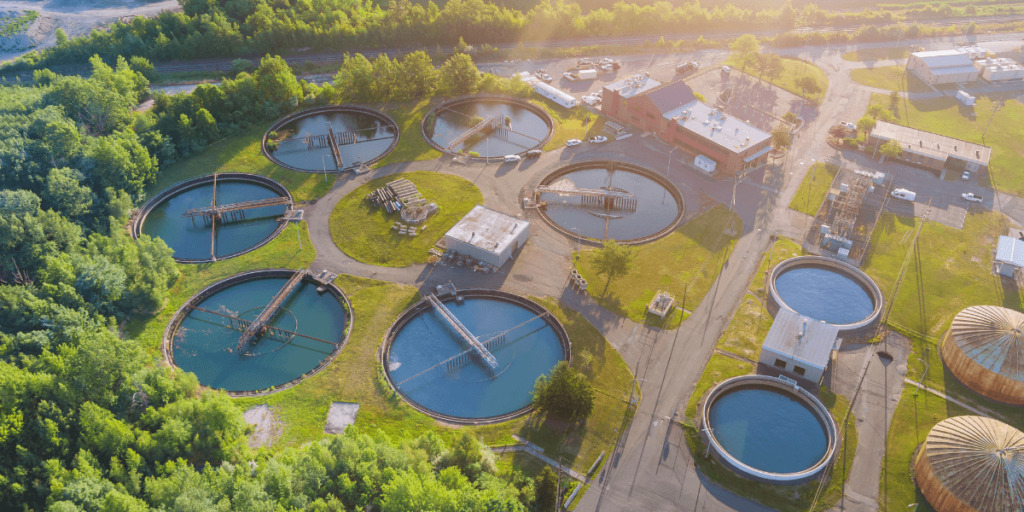If you’re serious about your company’s sustainability efforts, then it needs a sustainability statement. If you’re working hard toward ESG goals, then you should be sharing them!
But, writing a sustainability mission statement isn’t always straightforward. Even the shortest statements need to take many factors into consideration in order to be done well. Luckily, we’re here to help. Here’s our guide to sustainability statements and how to write one.
What Is A Sustainability Statement?
A sustainability statement is simply a declaration of a company’s impact, current sustainability policies, and its sustainability initiatives for continued improvement. It outlines the company’s sustainable business practices for customers, investors, and employees, offering awareness and transparency. Unlike a sustainability report or a sustainability audit, this mission statement is far less official and is mainly used for marketing purposes. Paired with high-level green business certifications, a sustainability statement will show stakeholders your commitment to sustainability while building trust and loyalty.
Why You Need A Sustainability Mission Statement
Providing a sustainability statement for your company is a good idea for a few reasons. Transparency is a key facet of green ecommerce. In a world where consumers are wary of greenwashing, it’s essential that businesses intent on reaching certain ESG goals do so in a genuine, science-backed, and honest manner. Offering a sustainability mission statement allows your company to share its sustainability journey and plans for the future so that customers can feel secure in choosing to support your company. Furthermore, some ESG certifications, like the Green Business Bureau, require a green mission statement as one of the first steps of the application process to showcase your commitment to sustainability.
Here are some of the top reasons why you should create green mission statements for your company.
- Prepare for getting a green business certification. Some certifications ask for a sustainable mission statement as part of the application process. Having such a mission statement readily available can help expedite the procedure.
- Hold your organization accountable. If your sustainability mission statements are out there for all to see, then your company must hold to them, lest you risk a marred reputation. Because the statements hold you accountable, they will also build trust with your customers.
- Entice high-level employees. Modern employees want to work for companies that showcase sustainable development. By displaying your green mission statement on your website, you’ll be more inviting to a wider range of potential employees.
- Display risk management to investors. Sustainable operations result in cost savings, compliance, and efficiency, all of which are essential considerations to potential investors. A sustainable mission statement can help showcase all of these.
- Build trust with your customers. Today’s consumers want to support sustainable business operations. By laying out your CSR practices in a mission statement, you’ll build trust and loyalty with your customers and help them feel good about supporting your business.
Download our FREE ebook:

Read more: Sustainability vs CSR vs ESG
What Are The Key Elements Of A Sustainability Statement?
Like all mission statements, sustainability statements need to be clear, transparent, and honestly reflect your company’s values. While your sustainability statement can be used as a marketing tool, it should not be written in a persuasive way. Rather, it should objectively outline exactly where you stand in terms of sustainability, your current policies, and your plans for the future.

Here are some key elements to include in green mission statements,
- Environmental sustainability: Outline your current environmental footprint, targets for the future, and how you’re going to get there. This will include things like your carbon emissions, waste management policies, energy usage, etc.
- Social responsibility: Sustainability goes beyond the environment. In your mission statement, you must also outline that you’re socially responsible. This will include things like ethical sourcing, volunteering in the community, charitable donations, etc.
- Supply chain management: The majority of any company’s environmental impact comes from its suppliers. In your mission statement, you should outline who your suppliers are, their sustainability approaches, and how you offer support to ensure that they align with your sustainability goals. Learn how to perform a supply chain audit.
- Stakeholder engagement: As you work toward your sustainability goals, you need to ensure that your employees, decision-makers, investors, and even your customers are on board, too. In your mission statement, you should outline how you engage with stakeholders to achieve your ESG targets.
Want to know where your business stands? Get your sustainability scorecard with our quiz:
How To Write A Sustainability Statement
How you write your sustainability statements will depend on your end goals. If you are seeking green certification, your green mission statement will likely need to be much more thorough than if you’re simply posting it on your site. Whether your mission needs to be incredibly detailed or a brief declaration, the same steps will apply.
Here are the steps to writing sustainability mission statements.
- Determine your target audience. This will help guide the entire process. If your audience is a green business certification board, for example, your statement will need to be incredibly detailed, and you will be able to use more technical language. If your green statement is meant for your customers, you should use more casual language that your audience will understand.
- Understand your sustainability drivers. What are your company’s greatest sustainability goals, and why are those the goals that they have chosen? Is it climate change, needing to be socially responsible, or consumer demand? Answering these questions will help guide the outline of the mission statement and help you determine which areas to draw attention to.
- List the key components of your sustainability strategy and top indicators of success. Even if the target audience for your mission statement is your customers, you still want to outline your targets and how you will know you’ve achieved them. Today’s consumers are savvy, and they’ll want to see data that supports your sustainability claims. Draw extra attention to your biggest goals and challenges, as these will be your greatest areas of social and environmental impact. If you use sustainability management software like EcoCart, then you can quantify your progress easily.
- Draft, edit, and finalize your statement. Based on the above brainstorming and outlining, create your green mission and vision statements. Write in a way that tells a story, drawing the audience through your sustainability journey and how your company has come to its current stance. Your statement should have elements of logic and emotion, using data to explain why your sustainability approach works and storytelling to explain why it’s important. Remember, it’s not a sustainability report, so it doesn’t have to be pages long. It just needs to outline your sustainability goals, why these goals are important, and how you’re working to achieve those goals.
Sustainability Statement Examples
Sustainability statements can vary greatly, depending on the goal of the statement. While some statements are covered in a sentence or two, others take a full page of writing. Here are some sustainability statements to gain inspiration from.
Pineapple Island
Ethical jewelry brand Pineapple Island offers a clean and concise sustainability mission statement that shows exactly where it stands. They’ve listed their main sustainability initiatives, including their carbon footprint, eco packaging, and materials, and described their approach in a couple of paragraphs per initiative. It’s clean, easy to read, and avoids jargon so that everyone visiting the site can know exactly where Pineapple Island stands. Read the sustainability statement here.
JuneShine

JuneShine’s sustainability statement offers a great example of telling a sustainability story. They bring readers through their entire journey, from the beginnings of their products to their current sustainability stance. Not only does this show customers that they can feel good about choosing JuneShine, but it makes them really believe in the product and what they’re doing. Read the sustainability statement here.
Andie

Swimwear company Andie takes an FAQ approach to addressing sustainability concerns. They outline the major areas that their customers are interested in and share how they mitigate those concerns. This creates a clean, easy-to-follow mission statement perfect for sustainability-minded customers. Read the sustainability mission statement here.
Sustainability Mission Statement Tips
When creating mission statements, don’t get too bogged by the details. Your mission statement is simply an overview of your sustainable practices. While you want to be comprehensive, you usually don’t have to do a deep dive into your approaches. All you need to do is provide a quick look into your strategies.
Here are our quick tips for writing a solid sustainability mission statement.
- Use clear and concise language. The world of sustainability is filled with jargon. Now that stakeholders are wary of greenwashing, overuse of confusing or vague language could quickly lose their trust. Provide a clear explanation of terms as needed, use specific language, be specific, and avoid overusing words like “eco-friendly.”
- Be comprehensive. Sustainability includes both social and environmental sustainability. Make sure that your sustainability mission includes both ecological considerations (like your carbon footprint and waste management) and social considerations (like employee welfare and ethical sourcing).
- Practice transparency. You’re not expected to have 100% sustainable business practices right off the bat. As you write your sustainability mission statement, highlight goals for the future and areas of transition. For example, if you’re working toward becoming plastic-free, but you’re not there yet, be open about your current stance and your plans to become plastic-free in the future.
- Keep it simple. This is not a sustainability report. Your sustainability mission statement will simply outline your sustainability stance and how you’re working toward your goals. As you comprehensively cover your sustainability strategy, you don’t need more than a couple of sentences to describe each section.
- Mention partners, like a sustainability committee. This will help build trust in your statement.
Common Questions
Because sustainability mission statements can vary, depending on the overall goals of the statement, you might have some questions. Here are the most common.
How long does it take to write a sustainability statement?
Any mission statement should be done with care. You shouldn’t just throw one together and call it a day. Even though your sustainability statement doesn’t need to be long, you should take the time to determine your target audience, decide which metrics you want to share, prioritize the sustainability initiatives that you want to highlight, and put it together in an aesthetic, easy-to-read manner.
What do I do with the sustainability statement once it’s done?
Once you’ve completed your sustainability statement, you will need to share it with relevant stakeholders. Usually, this means posting it on your website. Make sure that it’s easy to find and accessible to all readers.
How often do I need to update the sustainability mission statement?
How often you need to update your statement depends on how often the information within it changes. If you have an exciting update or have reached a big sustainability milestone, you should update it to keep it relevant. Otherwise, if your targets and approaches remain the same, there is no reason for frequent updating.
Conclusion
A well-written sustainability statement helps you share your sustainability goals with stakeholders and showcase your sustainability story. It’s an essential tool for gaining customer trust, earning green business certification, and engaging employees. But, you must ensure that it’s written well, including important metrics and avoiding greenwashing.
EcoCart has plenty of tools, like our emissions dashboard or ecommerce sustainability scorecard, that can help you reach your carbon emissions goals and tell your sustainability story. Interested in learning more? Reach out to our team for a demo today.



